 W
WThe Romualdo Formation is a geologic Konservat-Lagerstätte in northeastern Brazil's Araripe Basin where the states of Pernambuco, Piauí and Ceará come together. The geological formation, previously designated as the Romualdo Member of the Santana Formation, named after the village of Santana do Cariri, lies at the base of the Araripe Plateau. It was discovered by Johann Baptist von Spix in 1819. The strata were deposited during the Albian stage of the Early Cretaceous in a lacustrine rift basin with shallow marine incursions of the proto-Atlantic. At that time, the South Atlantic was opening up in a long narrow shallow sea.
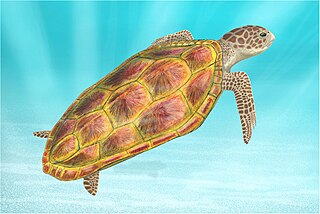 W
WSantanachelys gaffneyi is an extinct species of sea turtle. It is the only species in the genus Santanachelys, which itself is a member of the extinct family Protostegidae. The species was first described from a 20-centimeter long fossil specimen unearthed in 1998 from the Santana Formation of eastern Brazil. From the rock layer from which it was excavated, it was determined that the specimen was from the Early Cretaceous period. It is therefore one of the oldest known sea turtles. It was even recorded as the oldest sea turtle in Encyclopædia Britannica, but a new fossil named Desmatochelys padillai in 2015 is estimated to be as old as 120 million years.
 W
WSantanadactylus was a genus of pterodactyloid pterosaur from the Albian-age Romualdo Member of the Upper Cretaceous Santana Formation, of Barra do Jardim, Araripe Plateau, Ceará Province, Brazil. Four species have been named, but today are no considered congeneric with each other. It was a rather large pterosaur.
 W
WSantanaraptor is a genus of tyrannosauroid dinosaur that lived in South America during the Early Cretaceous, about 112 million years ago.
 W
WAraripemys is an extinct marine turtle genus from 112 to 109 million years ago, in the Early Cretaceous Crato and Romualdo Formations of the Araripe Basin in northeastern Brazil. It is one of the oldest known pleurodires.
 W
WAraripichthys is an extinct genus of prehistoric ray-finned fish that lived from the Aptian to Coniacian stages of the Cretaceous period. The genus is named after the Araripe Basin, where it was found in the Crato and Santana Formations. Other fossils of the genus have been found at Goulmima in Morocco, the Tlayua Formation of Mexico and the Apón Formation of Venezuela.
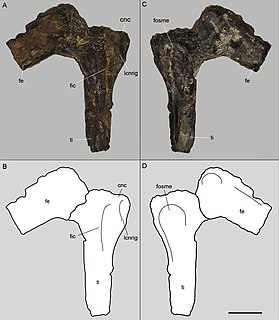 W
WAratasaurus is a monotypic genus of basal coelurosaurian theropod which includes a single species, Aratasaurus museunacionali, known from fossils found in deposits of the Romualdo Formation in Brazil. Aratasaurus lived during the Albian stage of the Early Cretaceous.
 W
WBrannerion is an extinct genus of prehistoric bonefish. Fossils of the genus were found in the Romualdo Formation of the Santana Group, Araripe Basin, northeastern Brazil.
 W
WCalamopleurus is an extinct genus of bowfins, comprising three species: C. cylindricus and C. mawsoni from Brazil and C. africanus from Africa.
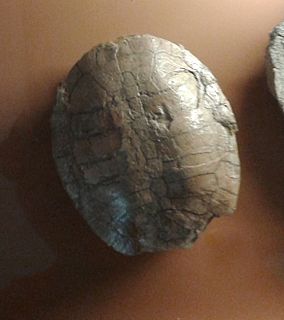 W
WCearachelys is an extinct genus of pleurodiran turtle which existed some 80 million years ago. The genus is monotypic, with only type species Cearachelys placidoi known.
 W
WCearadactylus is a genus of large pterodactyloid pterosaur from the Romualdo Formation of Brazil, South America. Fossil remains of Cearadactylus dated back to the Albian stage of the Early Cretaceous period, about 112 million years ago. The only known species is C. atrox, described and named in 1985 by Giuseppe Leonardi and Guido Borgomanero. The name refers to the Brazilian state Ceará, and combines this with Greek daktylos, "finger", a reference to the wing finger of pterosaurs. The Latin atrox means "frightful", a reference to the fearsome dentition of the species.
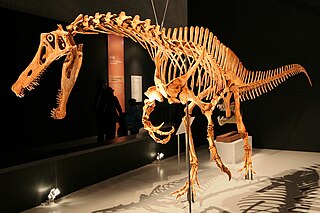 W
WIrritator is a genus of spinosaurid dinosaur that lived in what is now Brazil during the Albian stage of the Early Cretaceous Period, about 110 million years ago. It is known from a nearly complete skull found in the Romualdo Formation of the Araripe Basin. Fossil dealers had acquired this skull and illegally sold it to the State Museum of Natural History Stuttgart. In 1996, the specimen became the holotype of the type species Irritator challengeri. The genus name comes from the word "irritation", reflecting the feelings of paleontologists who found the skull had been heavily damaged and altered by the collectors. The species name is an homage to the fictional character Professor Challenger from Arthur Conan Doyle's novels.
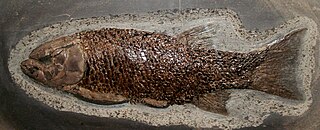 W
WLepidotes is an extinct genus of semionotid neopterygian ray-finned fish from the Jurassic period and Early Cretaceous. Fossils have been found in marine sediments of France, England, and Germany, and in Early Cretaceous sediments of Brazil and Bornholm, Denmark. Isolated scales from the Bahariya Formation have been attributed to Lepidotes. In 1895, many species were assigned to it by Arthur Smith Woodward. They include, L. elvensis, L. semiserratus, L. tuberculatus, L. gallineki, L. leedsi, L. latifrons, L. haydeni, L. occidentalis, L. macrocheirus, L. subovatus, L. minor, L. affinis, L. unguiculatus, L. laevis, L. maximus, L. mantelli, L. degenhardti, L. hauchecorni, L. mawsoni, L. notopterus and L.? pustulatus. Numerous additional species have been assigned to it which Woodward considered indistinguishable from others. It has been considered a wastebasket taxon, characterised by "general features, such as thick rhomboid scales and, for most of the species, by semi-tritorial or strongly tritorial dentition."
 W
WLeptolepis is an extinct genus of teleost fish that lived in freshwater and marine environments from the Middle Triassic period until the Early Cretaceous. The genus is one of the earliest recognized teleost genera.
 W
WMaaradactylus is a genus of anhanguerid pterodactyloid pterosaur known from the Lower Cretaceous period of the Romualdo Formation of northeastern Brazil.
 W
WMirischia is a small genus of compsognathid theropod dinosaur from the Albian stage of Brazil.
 W
WRhacolepis is an extinct genus of ray-finned fish from the Cretaceous Santana Formation of Brazil. Complete fossilised hearts from this species have been recovered.
 W
WRhinobatos is a genus of fish in the Rhinobatidae family. Although previously used to encompass all guitarfishes, it was found to be polyphyletic, and recent authorities have transferred many species included in the genus to Acroteriobatus, Glaucostegus, and Pseudobatos.
 W
WTapejara is a genus of Brazilian pterosaur from the Cretaceous Period. Tapejara crests consisted of a semicircular crest over the snout, and a bony prong which extended back behind the head.
 W
WThalassodromeus is a genus of pterosaur that lived in what is now Brazil during the Early Cretaceous period, about 100 million years ago. The original skull, discovered in 1983 in the Araripe Basin of northeastern Brazil, was collected in several pieces. In 2002, the skull was made the holotype specimen of Thalassodromeus sethi by palaeontologists Alexander Kellner and Diogenes de Almeida Campos. The generic name means "sea runner", and the specific name refers to the Egyptian god Seth due to its crest being supposedly reminiscent of Seth's crown. Other scholars have pointed out that the crest was instead similar to the crown of Amon. A jaw tip was assigned to T. sethi in 2005, became the basis of the new genus Banguela in 2014, and assigned back to Thalassodromeus as the species T. oberlii in 2018. Another species was named in 2015 based on a supposed crest fragment, but this was later shown to be part of a turtle shell.
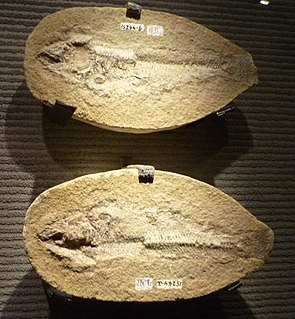 W
WTharrhias is an extinct genus of prehistoric bony fish that lived during the Aptian stage of the Early Cretaceous epoch. The type species T. araripis is named after the Araripe Basin, in which it was found in sediments of the Santana Formation.
 W
WTropeognathus is a genus of large pterosaurs from the late Early Cretaceous of South America. This genus is considered to be a member of the Ornithocheiridae, a diverse group of pterosaurs known for their keel-tipped snouts and large size. Tropeognathus is regarded as the largest pterosaur found in the Southern Hemisphere, only rivaled by the huge azhdarchids. The type and only species is Tropeognathus mesembrinus. Fossil remains of Tropeognathus have been recovered from the Romualdo Formation, which is a Lagerstätte located in the Santana Group of the Araripe Basin in northeastern Brazil.
 W
WTupuxuara is a genus of large, crested, and toothless pterodactyloid pterosaur from the Early Cretaceous period of what is now the Romualdo Formation of the Santana Group, Brazil, about 112 million years ago. Tupuxuara is a close relative of Thalassodromeus, and both formed a group that is either called Thalassodromidae or Thalassodrominae.